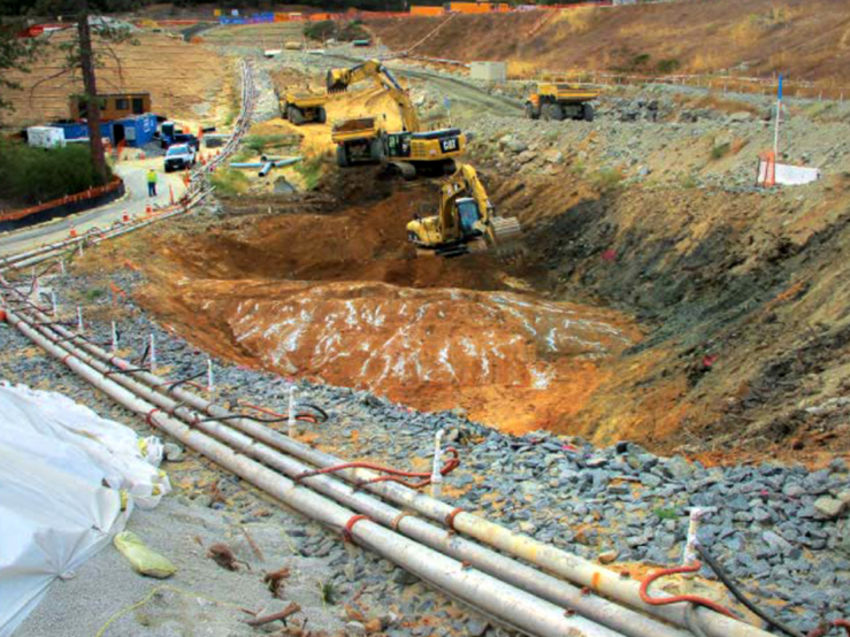Keller worked closely with the geotechnical engineer to design a dewatering system capable of maintaining drawdown a minimum of 3 ft below the excavation subgrade in low-permeability soils.

The project
Completed in 1910, Crane Valley Dam is a hydraulic fill structure 145 ft high and with a crest length of approximately 1,900 ft. In response to a request from the Division of Safety of Dams (DSOD), the owner undertook a stability analysis, which indicated that the dam would be susceptible to liquefaction in the event of a significant seismic event. The retrofit plan included toe excavation and the installation of a rock-fill buttress at the western section of the dam to increase its factor of safety.
The challenge
Construction of the buttress would require excavating the residual soil, fill, and weathered rock over a 500-foot length of dam toe. Piezometers installed to monitor groundwater levels had indicated artesian conditions within the weathered rock, which had resulted in seepage at the toe of the lower-level embankment. Dewatering was therefore required to ensure the continued integrity of the embankment during the work and dry conditions for the excavation and construction of the buttress.
The solution
Site soils consisted of 1 ft to 9 ft of saturated fill material above predominantly low-permeability clayey silt overburden that varied in thickness with the slope of the dam. Within the zone of excavation, the overburden ranged from 20 ft to 45 ft, underlain by weathered rock. A total of 136 ejector wells were installed, with 117 around the perimeter of the excavation and two interior rows of wells installed to increase system efficiency as well as delineate three separate work areas for the construction. The scope of work also included the installation of deep wells, extending 50 ft into the sound rock, to alleviate artesian pressure and piezometers below the subgrade to monitor drawdown. At project completion, the ejector wells were grouted in place and abandoned.
